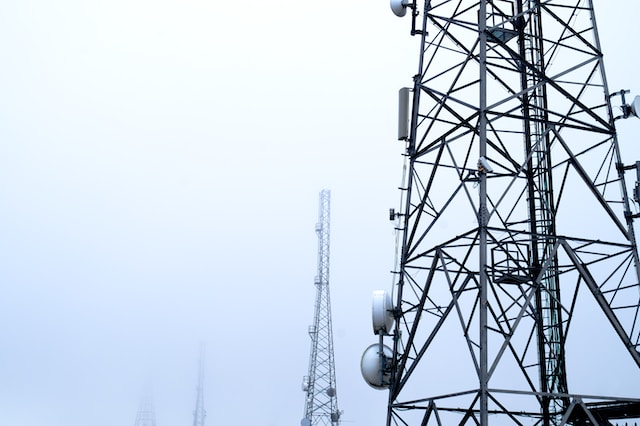Welcome to the world of the Internet of Things (IoT) where devices and appliances are inter-connected for a seamless experience. The IoT has revolutionized how we live our daily lives, from controlling home security systems remotely to monitoring our health through wearable devices. As technology advances, so does the IoT landscape and with the introduction of 5G networks, it’s transforming at an even faster pace. In this blog post, we’ll explore telecom’s role in building a seamless IoT ecosystem that spans from smart homes to smart cities. So buckle up and get ready for an exciting journey into the future!
What is the Internet of Things?
The Internet of Things (IoT) is a network of physical objects that can communicate and interact with each other through the internet without any human intervention. These objects include devices such as smartphones, home appliances, cars, wearables, and even buildings. IoT technology works by using sensors, software applications and data analytics to bring automation into our daily tasks.
The main goal of the IoT is to make life easier for individuals by simplifying their day-to-day routines. For instance, it helps save energy through smart thermostats that regulate temperature control based on occupancy patterns in homes or offices. Additionally, it enables healthcare providers to monitor patients remotely hence improving health outcomes.
Furthermore, the IoT has opened up new opportunities for businesses across industries by providing meaningful insights into customer behavior and preferences. By leveraging these insights businesses can make better decisions on product development leading to increased sales revenue.
The IoT has transformed how we live our lives today connecting people with things like never before leading to increased productivity and efficiency in almost every aspect of life from personal wellbeing to business growth .
How is 5G Changing the IoT Landscape?
The introduction of 5G technology is set to revolutionize the Internet of Things (IoT) ecosystem. Unlike its predecessors, 5G offers lightning-fast connectivity speeds and low latency, making it an ideal network for supporting large-scale IoT deployments.
One of the most significant benefits that 5G brings to the IoT landscape is enhanced connectivity. With 5G networks capable of reaching speeds up to 20 times faster than current 4G LTE connections, connected devices can exchange data at unprecedented rates. This increased speed allows for real-time processing and analysis, enabling devices to make more informed decisions quickly.
Another way in which 5G will change the IoT landscape is by increasing reliability. The new network’s low latency means that data transmission between devices will be almost instantaneous, reducing lag time significantly. This reliability ensures that critical applications such as smart home security systems and autonomous vehicles can operate safely without any interruptions or delays.
However, there are still challenges that need addressing with this new technology’s implementation into the market fully. For instance, not all areas have access to reliable internet coverage yet; only some urban areas currently offer full support for high-speed mobile communication protocols like those utilized by today’s smartphones.
It’s clear that with its superior capabilities in terms of speed and reliability over previous generations’ technologies – including Wi-Fi – there’s no doubt about how much potential impact could come from implementing these cutting-edge tools within our future societies!
The Role of Telecom in the IoT Ecosystem
Telecom plays a crucial role in the IoT ecosystem by providing the necessary infrastructure for devices to connect and communicate seamlessly. With the rise of 5G technology, telecom companies are now able to offer faster and more reliable connectivity, making it easier for IoT devices to transmit data in real-time.
In addition to connectivity, telecom also provides solutions for managing and securing large amounts of data generated by IoT devices. This allows businesses to extract valuable insights from their data and improve decision-making processes.
Moreover, telecom companies are collaborating with other industries such as healthcare, transportation, and agriculture to develop customized solutions that cater to specific needs. For example, connected vehicles can provide real-time traffic updates and prevent accidents while smart farming can optimize crop yields through precise irrigation management.
As the number of connected devices continues to grow exponentially, it is important for telecom companies to invest in research and development initiatives that foster innovation in the industry. By doing so, they will be able to stay ahead of competition while contributing towards building a seamless IoT ecosystem that benefits everyone involved.
Smart Homes
Smart Homes are a part of the future we’ve always dreamed of. Imagine being able to control everything in your home with just one click or voice command. Smart Home technology allows you to do just that.
With devices such as smart thermostats, lights, and security systems, homeowners can easily manage their homes from anywhere at any time. One benefit is having the ability to save energy by controlling the temperature and lighting when you’re not at home while still making sure everything is ready for your arrival.
Another advantage of Smart Homes is increased security. With cameras and sensors connected to an app on your phone, you can keep an eye out for anything suspicious or unusual happening around your property even if you’re far away.
Smart Home tech has made our lives easier than ever before by doing tasks like ordering groceries or starting laundry with only one touch. It’s amazing how much easier life becomes when everything works seamlessly together!
Smart Cities
Smart Cities are the future and a crucial component of the IoT ecosystem. With an increasing population, urban areas need to become more efficient, sustainable and livable. Smart cities leverage technology to enhance citizens’ quality of life by improving transportation, energy usage, waste management systems and public safety.
One way smart cities achieve this is through collecting data from sensors placed throughout the city that can monitor traffic patterns in real-time. This information can be analyzed to optimize traffic flow at peak times or during emergencies. Additionally, smart cities use advanced algorithms for predicting high-risk crime zones based on historical data which leads to a safer community.
Another aspect of smart cities involves managing energy consumption efficiently with renewable sources like solar panels installed on buildings or street lamps. By using machine learning algorithms that predict demand for power at specific times throughout the day enables significant cost savings while reducing greenhouse gas emissions as well.
Moreover, another critical feature of smart cities includes modernizing waste management systems by employing IoT devices such as garbage cans that alert authorities when they’re full so that they can replace them timely.
Creating a seamless IoT ecosystem requires collaboration between various stakeholders including telecom providers and municipalities working together towards creating smarter communities leveraging technology advancements for better living standards in today’s world where innovation drives human development forward every day!
The Future of the IoT Ecosystem
The future of the IoT ecosystem is exciting and full of possibilities. With the increasing adoption of 5G networks, we can expect to see even more connected devices in our homes, offices and cities.
One area that will likely see significant growth is wearable technology. From smartwatches to fitness trackers, wearables are becoming increasingly popular among consumers. As these devices become more sophisticated and capable, we can expect them to play a larger role in the IoT ecosystem.
Another key trend shaping the future of IoT is edge computing. This refers to processing data closer to where it’s being generated rather than sending it all the way back to a central server for analysis. Edge computing has numerous benefits including faster response times and reduced bandwidth requirements.
In addition, we’re likely to see continued growth in smart home technology as well as increased investment in smart city initiatives. These projects aim to leverage IoT technologies such as sensors and AI algorithms in order to improve everything from traffic flow to public safety.
The future looks bright for IoT with new advancements on the horizon that promise even greater connectivity and convenience for consumers everywhere.
Conclusion
The Internet of Things is transforming the way we live and work. With 5G technology enabling faster and more reliable connectivity, the potential for IoT is only getting bigger. Telecom companies have a crucial role to play in building a seamless IoT ecosystem that connects everything from smart homes to smart cities.
As we move towards a more connected future, it’s important for telecom providers to continue investing in infrastructure and innovation. This will not only benefit businesses but also improve people’s lives by making daily tasks easier and creating more efficient systems.
The possibilities are endless with IoT, but it requires collaboration between different industries to fully realize its potential. By working together, we can create an ecosystem where devices seamlessly communicate with one another, leading to increased productivity, improved sustainability and better quality of life.












